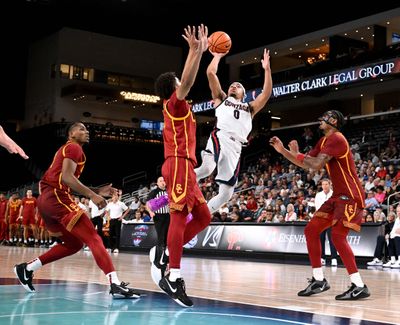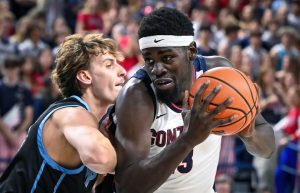
Gonzaga Lineup Configurations Are a Work in Progress: ‘It’ll Change Throughout the Year
Gonzaga’s men’s basketball team is navigating a season of transition as they search for the most effective lineup configurations. With a mix of experienced players, young talent, and transfers, head coach Mark Few is experimenting with various rotations to find the right chemistry. Few has emphasized that flexibility will be key, suggesting the lineup may evolve over the season based on players’ growth, game situations, and performance.
Key Factors Affecting the Lineup
The Bulldogs, traditionally a powerhouse in college basketball, face unique challenges this season with a less predictable roster. Although the team boasts returning upperclassmen like Anton Watson and Nolan Hickman, it has also welcomed several newcomers, including transfers from other schools and fresh recruits with high potential. This diverse roster composition creates an exciting dynamic but also brings challenges in establishing a consistent starting five.
Few has made it clear that no one is guaranteed a permanent starting spot. “It’ll change throughout the year,” Few said in a recent interview. “We’re trying to find the best combinations. Players have different strengths, and part of our strategy is figuring out which lineups work best in different scenarios.”
Transfers Add Depth and Versatility
Two key transfers, Graham Ike from Wyoming and Steele Venters from Eastern Washington, have quickly become integral parts of the lineup experimentation. Ike, a powerful forward with strong inside skills, brings added muscle to Gonzaga’s frontcourt. Venters, known for his sharpshooting, is expected to stretch the floor and provide a reliable scoring option from beyond the arc.
Their presence provides Few with options to create both traditional and small-ball lineups. Ike’s size and strength allow him to dominate in the paint, while Venters’ perimeter shooting can open up space, helping the team adapt to opponents who play tight defense. How these transfers blend with established players will be essential in determining Gonzaga’s success.
Younger Talent’s Growing Role
Gonzaga’s younger players, like Dusty Stromer, are also expected to see their share of minutes, even if starting positions aren’t immediately on the table. Few views the early part of the season as an opportunity to give them exposure and test different combinations, helping them transition into college basketball’s fast-paced environment.
“Experience is invaluable, and getting our younger players comfortable on the court is part of the process,” Few said. “As they grow, they’ll be part of some crucial rotations, and that’s something we’re developing.”
Moving Forward with Flexibility
Few’s approach to lineup flexibility reflects Gonzaga’s focus on creating a dynamic team capable of adapting to any situation. The non-conference games will likely be used as a testing ground for these configurations, giving Few insights before the high-stakes games in March.
“We’re committed to finding the best combinations that make this team successful,” Few emphasized. “Our players understand that roles might shift as the season progresses, and that’s part of being adaptable.”
As Gonzaga continues to evolve, fans can expect to see a fluid lineup strategy—one designed to keep opponents guessing while maximizing the talent on the roster.






